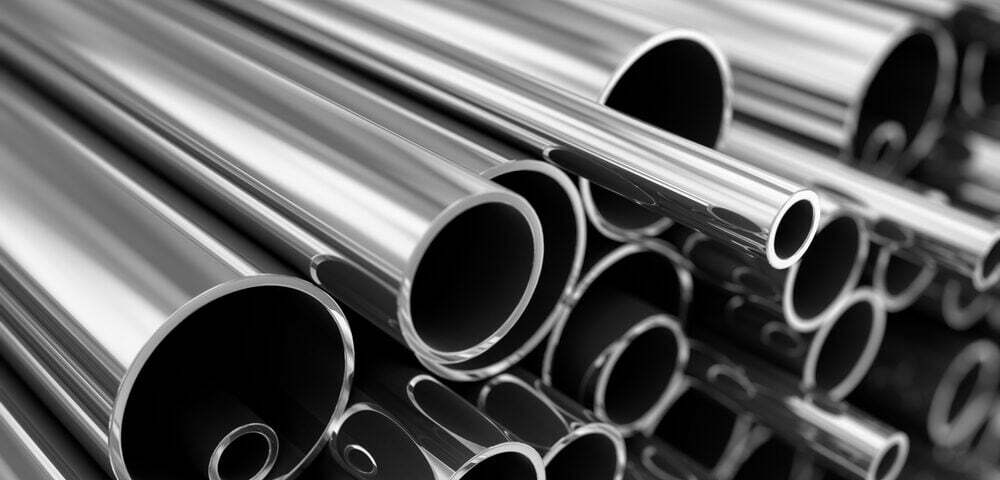Basics and Advantages of Duplex Steel for Utah Clients

Rust Prevention Tips for Steel and Other Ferrous Metals
March 29, 2022
Important Considerations for Welding Carbon Steel
April 26, 2022There are certain metal and steel applications that will actually involve the use of multiple different metal grades in the same setting, and a good example here is a material known as duplex steel. Referring to one of the most desirable steel formats in many heavy industries, including oil, gas and even nuclear areas, duplex steel is a major part of many projects within these and other realms.
At Wasatch Steel, we’re happy to assist Utah clients with sourcing numerous steel types and materials, from steel sheet and pipe to steel bar and many others. What is duplex steel, how did it come about, and what are some of its top benefits and qualities for many projects? Here’s a basic primer.
Duplex Steel Basics
The term duplex steel refers to a type of stainless steel that has two different grain phases: Austenite and Ferrite. Both are present in the microstructure of the metal, and both offer different benefits. The key is that this combination provides a higher level of resistance to stress-corrosion cracking (SCC) and pitting corrosion than other types of stainless steel.
Some of the specific properties of duplex steel include:
- High strength compared to other stainless steel products
- Fantastic corrosion resistance
- Amazing “creep strength”, or resistance to deformation over time under conditions of high stress
- Fantastic weldability and workability overall
- Improved ductility and toughness, even at low temperatures
- A wide range of applications in many different industries
History of Duplex Steel
Duplex steel was first created in the 1920s, when scientists and researchers were looking for a way to improve upon austenitic stainless steels. At the time, these were the most popular type of stainless steel products on the market. However, they didn’t have the best resistance to pitting corrosion or SCC. The solution was to add a second phase, ferrite, which did have these properties.
Duplex steel wasn’t widely used until the 1970s, when it started being utilized more in the oil and gas industry for subsea equipment that needed to withstand tough conditions. It has only grown more popular since then, and is now used in a wide range of applications in many different industries.
How Duplex Steel is Made
The production of duplex steel is virtually identical to other forms of stainless steel. It starts with melted steel that is poured into ingots or billets, which are then hot-rolled and cold-rolled to create the finished product. The key difference is in the composition of the metal, which contains higher amounts of chromium, molybdenum, manganese and nitrogen.
The duplex microstructure is achieved through a heat treatment process that involves annealing and rapid cooling. This results in the formation of both austenite and ferrite grain phases within the metal.
Major Benefits of Duplex Steel
Here are some of the main reasons duplex steel is such a popular and desirable metal type:
- Cost: First and foremost, because duplex stainless steel has a lower nickel and molybdenum content than austenitic stainless steels, it is typically more affordable. This can be a major advantage for many projects, especially those on a tight budget.
- Weight: Duplex steel also tends to be lighter than austenitic stainless steels, making it easier to work with and transport. This can cut down on both costs and hassle for many projects.
- Weldability: Duplex steels have excellent weldability thanks to their ferritic properties. This makes them much easier to work with than austenitic stainless steels, which can be difficult to weld.
- Machinability: In addition, duplex steels are also easier to machine than other types of stainless steel. This again saves time and money for many projects.
- Strength: One of the biggest advantages of duplex stainless steel is its high strength. It is twice as strong as austenitic stainless steels, making it ideal for many applications that require a durable metal.
- Corrosion Resistance: As mentioned, duplex stainless steel also has amazing corrosion resistance. This is thanks to the presence of both austenite and ferrite in the microstructure, which provides a higher level of protection against pitting and SCC.
- Heat resistance: Another major benefit of duplex stainless steel is its heat resistance. Thanks to its austenitic properties, it can withstand high temperatures without losing its strength or becoming deformed.
Common Uses and Applications
Due to its various properties we’ve gone over above, duplex stainless steel has a wide range of potential uses and applications. Here are some of the most common:
- Structural applications: Because of its high strength, duplex stainless steel is often used in structural applications where austenitic steels would not be able to withstand the stress. This includes things like bridges, buildings, and offshore platforms.
- Pressure vessels: Duplex stainless steel is also frequently used in pressure vessels, particularly in the oil and gas industry. Its high strength and corrosion resistance make it ideal for this type of application.
- Storage tanks: Storage tanks are another common use for duplex stainless steel. Again, the high strength and corrosion resistance are major advantages in this case.
- Pipelines: Pipelines are yet another major application for duplex stainless steel. Its resistance to corrosion and stress cracking make it ideal for this type of use.
- Chemical plants: Chemical plants are also often made out of duplex stainless steel. This is due to the fact that it can withstand high temperatures and corrosive chemicals.
Now that you know a little bit more about duplex stainless steel, you can see why it is such a popular choice for many different applications. If you think it might be the right metal for you, contact our team at Wasatch Steel to learn more about this or any of our other steel products and services in Utah.



